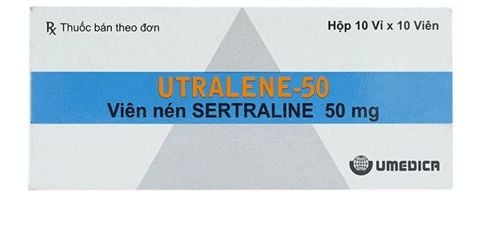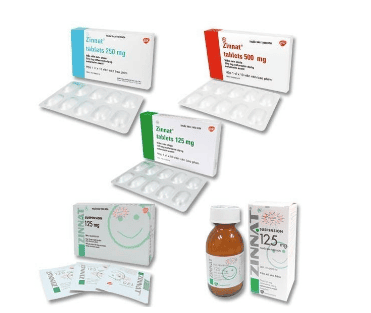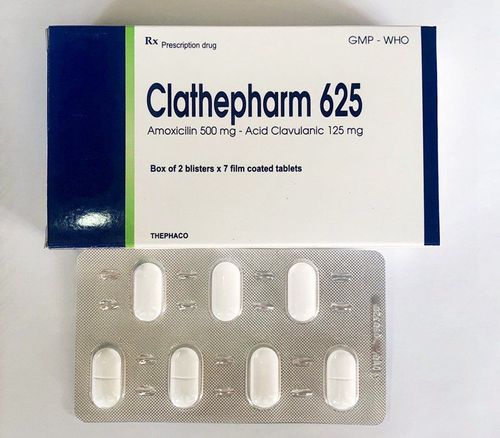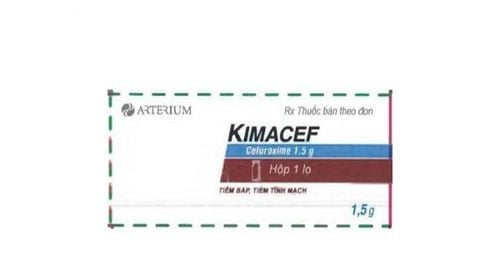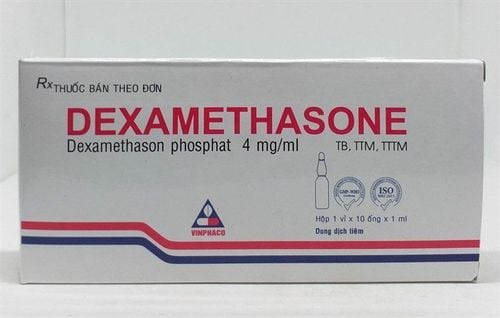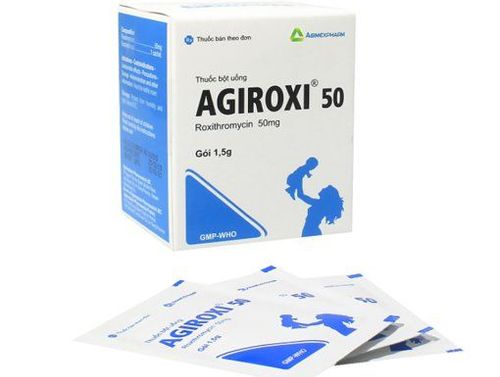This is an automatically translated article.
Bearcef is often used in cases of upper respiratory tract infections, lower respiratory tract infections, urogenital infections, gonorrhea,... In today's article, we will learn about the ingredients, Bearcef drug use and the most important content to know about this drug.1. What is Bearcef?
Bearcef is a drug containing the main ingredient is Cefuroxime, manufactured by Daewoong Pharm Co., Ltd - Korea.
Pharmaceutical name: Bearcef drug. Ingredients: Cefuroxime. Group of drugs: Belongs to the group of anti-parasitic, anti-fungal, anti-viral, anti-infective drugs. Dosage form: Film coated tablets. Packing: Packed in boxes, each box includes 1 blister x 10 tablets. Manufacturer: Produced by Daewoong Pharm Co., Ltd - Korea. Registered business: Registered by Hana Pharm Co., Ltd. Registration number: VN-6878-02.
2. Effects of the drug Bearcef
Cefuroxime is known as a semi-synthetic broad-spectrum antibiotic, in the cephalosporin group, an injectable sodium salt, an oral drug in the form of axetil ester. In particular, Cefuroxime axetil is the precursor of Cefuroxime, it has very little antibacterial activity if it has not undergone hydrolysis to Cefuroxime in the body after being absorbed.
The antibacterial activity of Cefuroxime is attributed to inhibition of bacterial cell wall synthesis, through binding to essential target proteins (penicillin-binding proteins). The cause of drug resistance can be caused by bacteria secreting the enzyme cephalosporinase or by altering the penicillin-binding proteins.
Cefuroxime has specific and effective antibacterial activity against many common pathogens, including beta-lactamase/cephalosporinase secretions of gram-negative and gram-positive bacteria. In particular, it is very resistant to many beta-lactamase enzymes of gram-negative bacteria.
Thanks to the above uses, Cefuroxime is often indicated for use in cases such as:
People with lower respiratory tract infections such as: acute and chronic bronchitis, pneumonia. People with upper respiratory tract infections such as sinusitis, otitis media, ear - nose - throat infections, pharyngitis, tonsillitis. People with urinary-genital infections such as cystitis, pyelonephritis, urethritis. People with skin and soft tissue infections such as: peeling skin, pimples, pustules. People with gonorrhea, uncomplicated acute urethritis caused by gonorrhea and cervicitis.
3. Dosage and usage
3.1. Amount
Cefuroxime axetil is an acetoxymethyl ester that is administered orally in the form of film-coated tablets or suspension.
For adults:
Tonsillitis, pharyngitis or maxillary sinusitis caused by susceptible bacteria: Use a dose of 250mg each time 12 hours apart. A hours. Uncomplicated urinary tract infections: Use a dose of 125mg or 250mg, each time 12 hours apart. Uncomplicated cervical or urethral gonorrhea, or uncomplicated rectal gonorrhea in women: Use a single dose of 1g. For newly acquired Lyme disease: Use a dose of 500mg, 2 times a day, continuously for 20 days. For young children:
Tonsillitis, pharyngitis: Use a suspension of 20mg/kg/day, the maximum dose is 500mg/day, divided into 2 small doses for oral administration. Also can use 1 tablet 125mg, once every 12 hours. Otitis media, exfoliative condition: Use a suspension of 30mg/kg/day, the maximum dose is 1g/day, divided into 2 small doses. Alternatively, 250g tablets can be used, once every 12 hours.
3.2. How to use
With the drug in the form of film-coated tablets, should not be crushed, for young children, it is preferable to use the suspension form. A typical course of treatment lasts for 7 consecutive days. Oral suspension and film-coated tablets are not bioequivalent, so they are not interchangeable in terms of mg/mg.
Note: There is no need to be especially careful when using the drug for patients with renal failure or in the process of renal dialysis, the elderly when not taking the maximum dose of 1g / day.
3.3. Missed dose and overdose
Overdose
In case of drug overdose, most patients only experience nausea, vomiting or diarrhea. However, it can also cause neuromuscular hyperexcitability and seizures, especially in patients with renal impairment. In this case, consideration should be given to the possibility of multiple drug overdoses, drug interactions, and unusual pharmacokinetics in the patient. It is necessary to protect the patient's respiratory tract, in case of necessity, protect the respiratory tract, support ventilation and administer fluids. If convulsions are detected, the drug should be discontinued immediately, anticonvulsant therapy can be applied when clinically indicated. Hemodialysis will help remove drugs from the blood, but most treatment is supportive or only to treat complications. Missed dose
If you forget to take a dose while taking the medicine, the patient should take the missed dose as soon as possible (usually 1-2 hours from the time prescribed by the doctor). . However, if it is too close to the next dose, skip the missed dose and continue taking the next dose as scheduled. Never make up for a dose by doubling the dose.
4. Note when using
4.1. Contraindications
Do not use the drug for patients who are allergic or sensitive to antibiotics of the Cephalosporin group.4.2. Side effects
In general, unwanted side effects caused by Cefuroxime axetil are usually mild and last only a short time. In which:
Common: Erythema multiforme, urticaria, skin rash, itching, drug fever, toxic skin necrosis, serum sickness. Uncommon: Nausea, vomiting, diarrhea, elevated liver enzymes, eosinophilia. Rare: Leukopenia, thrombocytopenia, pseudomembranous enterocolitis. In addition, eosinophilia and transient increases in hepatic enzymes [AST (SGOT) and ALT(SGPT)] have been observed during treatment with Zinnat. A positive Coombs reaction has also been reported with cephalosporin therapy, which may interfere with blood cross-sectional tests.
4.3. Use caution
Generally, cephalosporin antibiotics can be safely used in penicillin-sensitive patients, although cross-reactivity has been reported. Therefore, special caution should be exercised when administering the drug to patients who have experienced anaphylaxis to penicillins. Similar to other antibiotics, Cefuroxime axetil, when used for a long time, can cause the proliferation of non-susceptible bacteria such as: Candida, Clostridium difficile, Enterococci, in which case the drug may need to be discontinued. Pseudomembranous colitis has been reported with broad-spectrum antibiotics, which is why it is important to consider the diagnosis in patients with severe diarrhea during or after antibiotic therapy. The hexokinase or glucose oxidase methods are recommended for the determination of blood or plasma glucose concentrations in patients treated with Cefuroxime axetil. This antibiotic does not interfere with alkaline picrate tests for creatinine. There is no experimental evidence that cefuroxime axetil causes adverse effects on the fetus or causes teratogenicity. However, similar to other resistant drugs, patients should be used with caution during the first months of pregnancy. Cefuroxime is partially excreted in human milk, so caution should be exercised when Cefuroxime axetil is administered to a nursing woman to avoid adverse effects on the infant.
4.4. Drug interactions
In the process of using Cefuroxime concurrently with other resistant drugs, it is easy to cause an interaction reaction, leading to the phenomenon of antagonism or synergism. Specifically:
The drug can reduce the effect of sodium bicarbonate and anitidine, reduce the bioavailability of cefuroxime axetilm. Therefore, Cefuroxime should be taken at least 2 hours after taking antacids or H2 blockers, because these drugs have the potential to increase gastric pH. High doses of Probenecid reduce renal clearance of Cefuroxime, resulting in higher and more prolonged plasma concentrations of Cefuroxime. Concomitant use of cefuroxime and minoglycosides increases the potential for nephrotoxicity. When the drug is shared with food, alcohol or tobacco, ... can affect the phenomenon of antagonism or synergy with the drug. Therefore, it is necessary to carefully read the instructions for use of the drug, consult the doctor, list the drugs (prescription and non-prescription), food supplements, vitamins for the doctor to know. Above is important information about the ingredients, uses of Bearcef and important notes when using that we need to know. To ensure the effectiveness of the drug and the safety of health, patients only use the drug when there are specific indications and instructions from doctors and medical staff.




